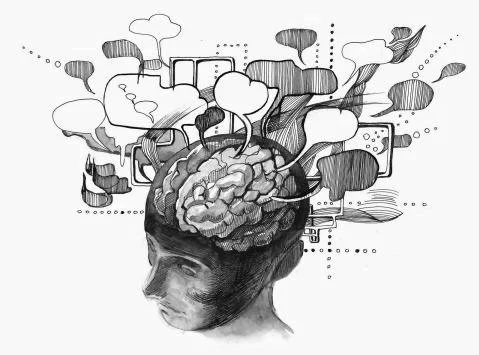A BAROMETER FOR EMOTIONAL EXPERIENCe
Key points:
This is a short form article on the Window of Tolerance. If you want more information, you might like my video What Goldilocks & Your Nervous System Have in Common.
Just like everything else biological, our nervous system has an ideal climate; a Goldilocks zone in which it operates best. This zone is called the Window of Tolerance.
If we’re “too hot” (feeling too much, aka hyperarousal of our nervous system) or “too cold” (feeling too little, aka hypoarousal of our nervous system), our brain’s ability to process our experiences and respond adaptively goes down. Parts of our brain just don’t thrive in those climates.
Trauma, overwhelming emotional experiences and chronic stress tend to narrow our Window of Tolerance, making us more prone to emotional dysregulation, processing errors, anxiety, panic, depression and dissociation.
A key first step in treatment is expanding the Window of Tolerance in order to increase mental capacity. This both reduces symptoms and helps clients to tolerate the emotional memories enough to work though them in therapy.
What is the Window of Tolerance?
Just like everything else biological, our nervous system has an ideal climate; a Goldilocks zone in which it operates best. This zone is called the Window of Tolerance.
Sandwiched between the chaotic extremes of hyperarousal and the barren wasteland of hypoarousal, the Window of Tolerance is the temperate zone in the middle where everything is “Just Right.” It’s our nervous system’s sweet spot.
the Window of tolerance & Mental Capacity
Within the Window of Tolerance, our mental capacity is optimized. Information flows smoothly between the different processing centres of the brain, we are able to process and integrate information, and can respond to situations adaptively. While our level of arousal rises and falls throughout the day depending on the circumstances (that deep sigh of relief when you get home after a long day, that moment of alarm when you realize you have company coming for dinner and have no groceries), the fluctuations are moderate and adaptive, prompting the appropriate response (a glass of wine on the couch, a fast-paced jaunt to the store).
Above and below our Window of Tolerance, our mental capacity rapidly diminishes.
When we are hyperaroused, the system is flooded with more information than it is able to process and integrate. Without the ability to organize, interpret and make sense of our experience, the system is rapidly overloaded. Sensing a threat, our defensive operating system is triggered and our active survival responses (fight, flight, freeze) take over, leaving us feeling enraged, irritable, anxious or panicked.
If left unresolved, this hyperarousal often plummets into hypoarousal, which can be thought of as a type of burn-out that follows the energy-intensive hyperarousal state. We are still unable to process and integrate our experience, but with our active survival responses not having rectified the situation, we turn to our passive survival responses (submit, collapse, dissociate). When we are hypoaroused, the system is essentially tuning out the internal chaos, leaving us feeling numb, cut off and depressed.
Narrowing of our window of tolerance
The difficulty is that those who have experienced trauma, persistent stress and chronic attachment inadequacies tend to have a narrowed Window of Tolerance.
They have, in effect, been taught that the world is not safe, and therefore have set their barometer for adaptive survival actions fairly low. In a world that is not safe, having a defensive operating system with a hair-trigger is the best way to survive. Even more significant, being in the Window of Tolerance may not actually feel safe because the nervous system has learned that this is where you’re vulnerable.
This narrowed Window of Tolerance often causes people to routinely misinterpret innocuous situations as dangerous, leading to the experience of their system continually being hijacked by defensive operating systems.
The window of tolerance & Treatment
The relationship between the Window of Tolerance and our ability to make sense out our experience makes it a key element of treatment. If we have a narrowed Window of Tolerance or do not feel safe inhabiting it, we will not have the mental capacity to work through the events that have led us here. Instead, the traumatic memories will overload our mental capacity, push us outside our Window of Tolerance and lead us into the realms of re-experiencing the trauma, rather than working through it.
Recalibrating the nervous system to expand the Window of Tolerance not only reduces the symptoms of emotional dysregulation, such as anxiety, panic, dissociation and depression, it also opens the door for the deeper work of healing the emotional wounds that caused its narrowing in the first place.







